

I've used this F/6 10" Newtonian for most of the images on my web sites, including Jupiter, Saturn, and Mars. Its primary purpose was to test some telescope construction ideas and provide site seeing data. I'm ready to upgrade to a 16" telescope, so I'm selling this complete optical tube assembly. The mirror was made by Maurizio Di Sciullo of Excelsior Optics in 2002.
 -----
-----
The fork mount was designed to hold a 16" telescope, so the 10" was fit by extending the DEC axis. I'm selling only the OTA with the mounting rings so you can adapt it to your own mount. The tubing is aluminum painted white and lined inside with 1/8" cork and overlaid with Protostar black flocked paper. It has survived years in the high humidity on San Diego. Note that no finderscope is included, but there are lots of holes to place your own.
 -------
-------
The plate attaches to the rings with four 1/4"-20 bolts. The rings are machined flat about 3" wide to allow good contact.
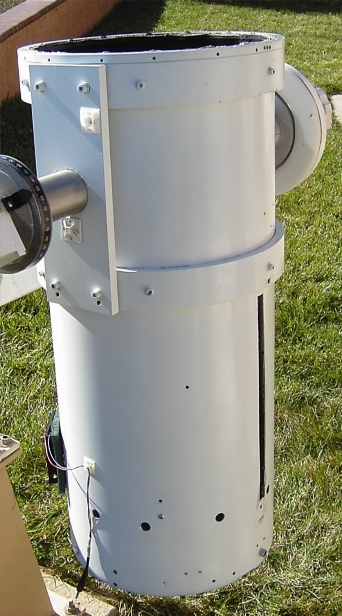 -----
-----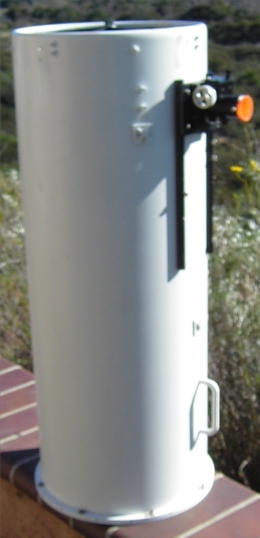
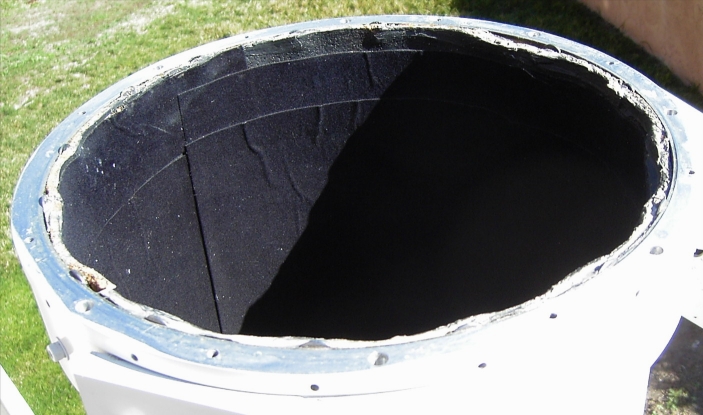
One of the unique features of the telescope is that it separates in the middle. This was done to simplify the original construction, and the top half (with the CCD camera) could be taken inside for maintenance. There is a dowel pin that allows the tubes to reassemble in precisely the same position, eliminating recollimation. There are four dowel holes at 90 degree increments, so the top can be rotated in any of four positions. If the mirrors are aligned correctly, no recollimation should be needed, although this feature was never tested.
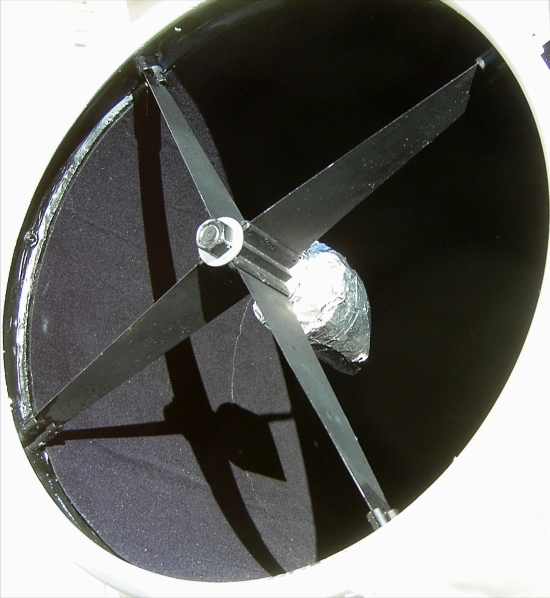
The top section includes a spider make by Novak. The secondary was covered with aluminum foil in the latest tests to reduce condensation without using a dew shield. The secondary mirror was also a 1.8" Protostar diagonal. I'll throw in a 2.1" mirror and holder that I used for some tests.
 ----
----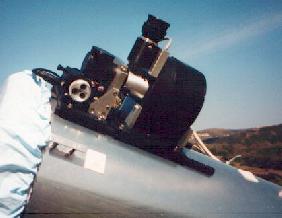
The focuser is a JMI unit with a modified hand controller set to issue either short steps or a continuous slew. The rails allow moving the focuser along the optical axis as well as a platform for adding other components. I used them to mount a fold mirror so I could then mount additional platforms without extending the optics out from the telescope. The SBIG ST-7 with a color filter wheel is shown, but I also used the platform to insert an AO-2. (A barlow was inserted into the focuser to extend the focal point.) This might be a good setup for adding a spectrometer. I'll include the small fold mirror and bracket, but not the barlow lens, additional platforms, or camera.

The fan on the side exhausts through the side holes as well as out the open back, where the original fan was located. I did not see much difference, but the temperature drop in San Diego was always pretty slight, so that was not a very good test. The fan connects to your 12volt source.
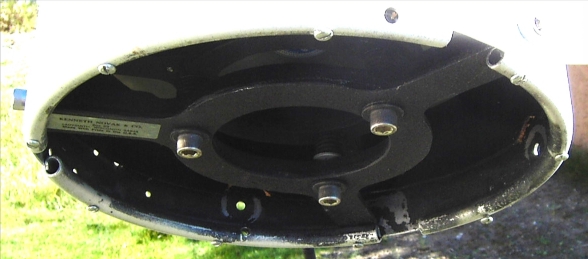 ----
----
Another nice feature is that the mirror and 9-point Novak cell is mounted inside the tube bayonet style. By removing the three side bolts, the mirror cell can be rotated a few degrees and then lowered by hand to remove it from the tube. It can be cleaned and then reinstalled with virtually no recollimation required. The Excelsior mirror was coated by Spectrum Coatings with a hard overcoat.

Note that the mirror has been masked on the outer1/8" with flocked paper. This serves two purposes; 1) a slight turned edge is removed, even if its difficult to measure, 2) the mirror cover is cushioned by lying on this small strip. Note also that the mirror clips have been removed; since I use it in a yoke mount, it never gets turned upside down! You might want to put some small clips of bent metal to hold the mirror in place. The mirror is centered in the cell by adjusting some nylon-tipped set screws on each vertical post just to slight contact, not enough to distort the mirror, and not enough to hold it in place if the tube were tipped over.

Yet another unique feature is the aluminum cover. Notice the slot in the tube in the previous pictures; this slot allows the aluminum cover to be removed before an imaging session and replaced at the end, without removing the mirror. As long as the mirror is dry and clean, the cover is good protection. I've kept the mirror outside for several years this way. Small standoffs inside the tube keep the mirror cover centered over the mirror.
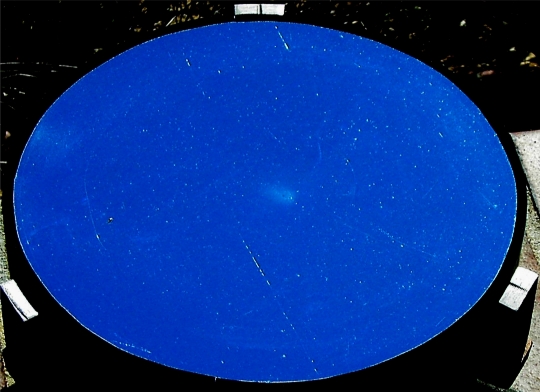
The cover worked well enough, but sometimes it did trap some dew. I also tried some techniques where I pumped in dry air into the hole in the center of the cover, but it turns out that the air was contaminated for some trials. I used pretty rough cleaning, wiping the protected mirror coating with damped lens tissue to try to remove some water spots. The figure here is illuminated by the sun, and the camera was just to one side, making the worse possible illumination. For planetary imaging, the sleeks and spots are not a problem (since these scatter light far from the Airy disk), but some of you might want to recoat the mirror and treat it more gently.
I'll be happy to answer any questions if you e-mail me at dbruns@stellarproducts.com I am pricing the total package as follows:
OTA, including one 10" premium primary mirror, 2.1 and 1.8" secondaries and holders, mirror cover, JMI focuser modified to step or slew, small fold mirror bracket with fold mirror, tube mounting rings and plates: $800.
Buyer to pick up in San Diego or pay for packaging and shipping at actual costs. I prefer to sell the entire package rather than selling the mirrors or parts separately. Please e-mail me, however, with counteroffers or your best bid.
No warranties, express or implied, are offered. Negotiated sale is final, all parts as-is. Seller is a private party, not selling any intellectual property or assets of Stellar Products. The images I obtained were the product of good seeing, good focus, good collimation, and careful techniques; your results might differ.
Links to other Stellar Products pages: